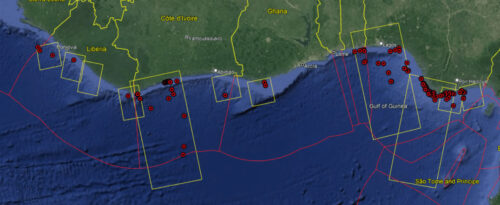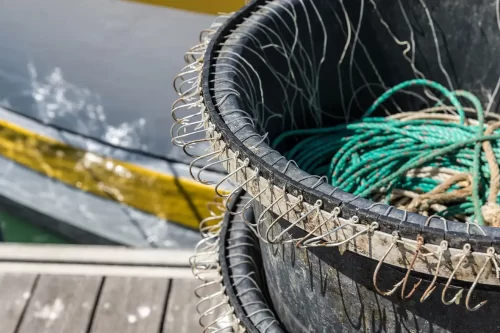In the commercial fishing world, transshipment is the transfer of catch from one vessel to another. During a transshipment, a fishing vessel meets up with a large refrigerated cargo-type ship, known as a “reefer.” They tie up alongside one another and drift while the fishing vessel offloads tons of catch before heading back out to the fishing grounds.
In many cases, it can be more economical to send a reefer to the fishing grounds to collect fish from multiple vessels than it is to bring a fleet into port or to a processing plant. Tuna longliners are known to stay out at sea for more than a year at a time, so reefers can play a big role in keeping the fish coming in.
Reefers not only carry fish to port for sale and distribution, but they often process and package the catch onboard and box it into cartons labeled by location and seafood company. When transshipment happens out at sea, far from watchful monitors, it’s easy to mix illegal and unreported catch with legal fish, effectively “laundering” it before bringing it into the seafood market. What’s more, in some places, cargo vessels are exempt from catch documentation and monitoring, because they don’t actually catch fish. It’s big gap in the chain of custody that makes seafood traceability nearly impossible.
Some transshipment is legal, but mostly the transfer of fish from one vessel to another is restricted to ports where it can be tightly monitored. Even offshore, it is expected that legal transshipment be done with observers present. Of course, far offshore it is hard to monitor.
We’re trying to use AIS data (and VMS data from Indonesia and other countries that are willing to share VMS) to identify vessel behavior patterns that indicate transshipment so we can determine where and when ships are transferring catch, both legally and illegally. We’re also identifying instances in which a legally operating reefer meets with another vessel that has been fishing illegally.
We expect some characteristics, such as two vessels in close proximity moving at drifting speed, to be good indicators, but it’s quite a bit more challenging than that. There are many reasons for two vessels to meet at sea. A tug boat and its haul travel closely together, for instance, and supply ships bring food, fuel, equipment and crew to vessels at sea.


